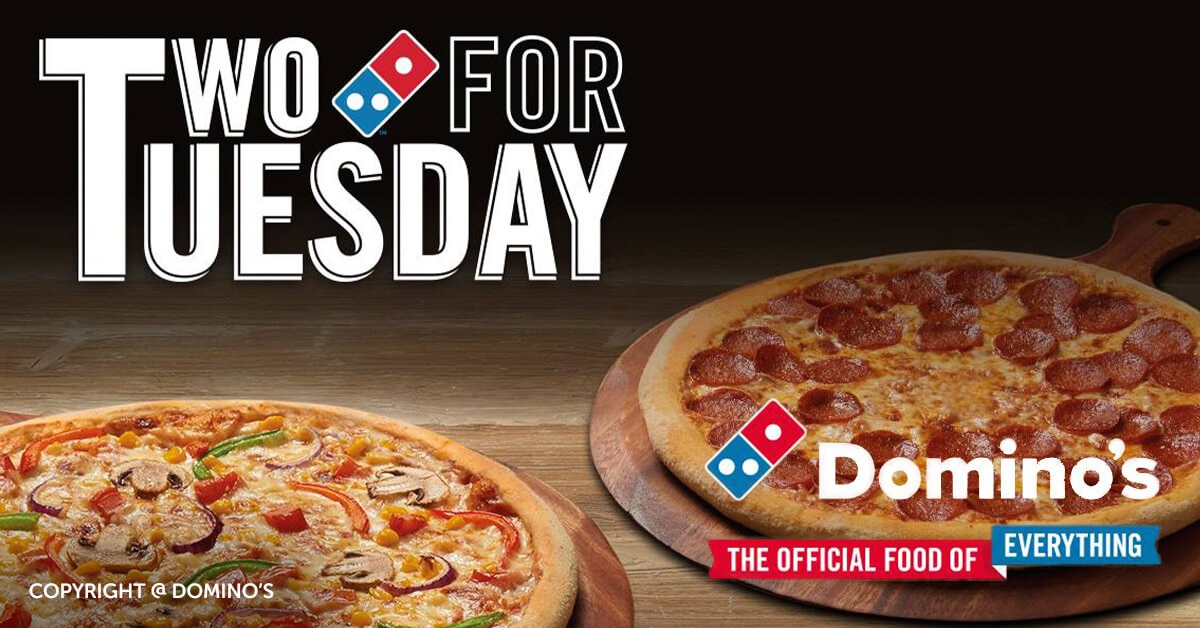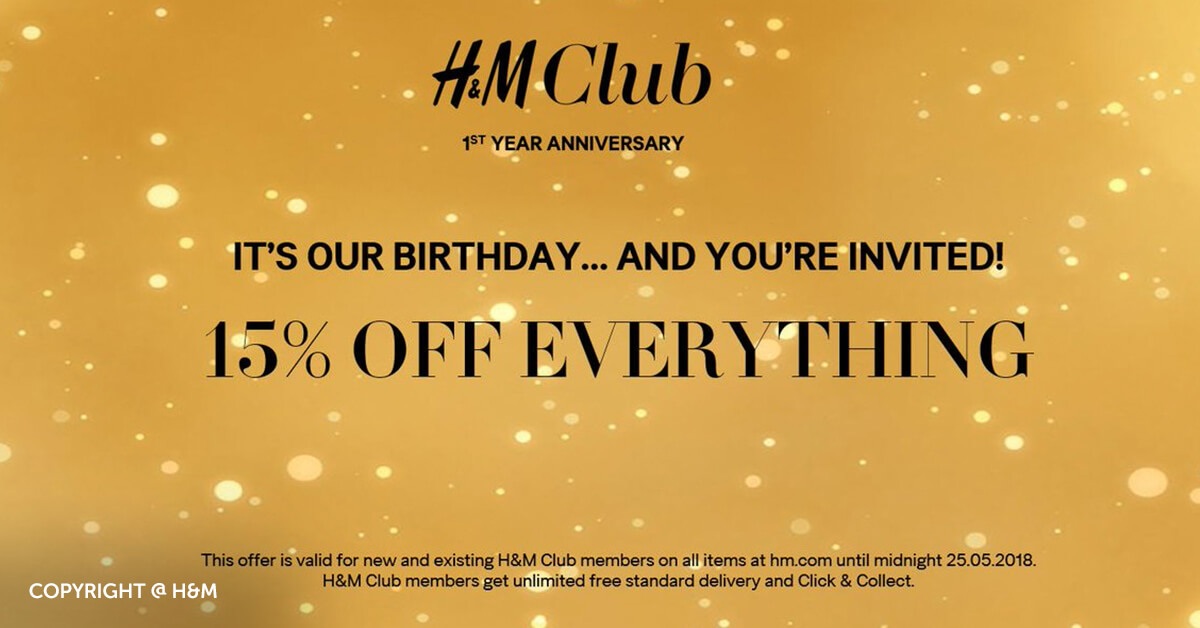
3 amazing sales campaigns and tips for your business
Posted 20th July, 2021 by Sarah
Wondering how you can successfully fit a sales campaign into your business’s marketing efforts?
That’s great, because sales campaign promotions are an effective short-term marketing tactic.
They’re designed to create urgency and increase sales.
Consumers love sales and you don’t have to wait for seasonal landmarks like Black Friday and Christmas to run one.
Should you need to hit those quarterly targets, you can consider tactics such as flash sales, coupons, giveaways and buy-one-get-one-frees.
To help you create a successful sales campaign, check out these advertisement examples followed by digital marketing tips on how you can turn your sales outreach from good to great.
1. Buy-one-get-one-free promotions: Domino’s

Buy-one-get-one-free deals (BOGOF) are among the most appealing types of sales promotions.
Take Domino’s, for example. The multinational pizza restaurant embraces simplicity with its ‘Two for Tuesday’ tagline, logo and sales images.
In marketing, less is often more. After all, Domino’s don’t want people to overthink, they want people to overeat.
2. Membership discount example: H&M

Do you want to be part of the club? H&M know you do. Exuding exclusivity, here Club members get 15% off everything when they join.
Offering incentive deals is a great way to build brand loyalty, get repeat business and develop a consenting customer database who are primed for future marketing communications.
3. tsoHost Summer Web Hosting Sale

Let’s break the fourth wall for a moment.
In this example, you’ll find a web hosting and domain campaign created by us here at tsoHost.
The ‘Summer Sale’ moniker reveals the limited time nature of this promotion - once the sun starts to go down, so will the offer.
These products are largely geared towards a more technical audience - we don’t need to overwhelm these consumers with information as they’ll fill in the gaps.
To open the conversation, what’s most important is what’s most important to them - the product, the quality and the price.
The user is invited to click to find out more about the promotion and product. Additional reasons to buy are further fleshed out by way of videos and carousels for those who require further consideration prior to visiting the website.
You can find out more about our web hosting and products and tsoHost here.
How to create a sales campaign strategy
These sales campaigns didn’t just happen in a vacuum. They were planned.
So, whilst you might be keen to launch your own sale straight away, it can help to pause for thought and consider undertaking a digital marketing sales campaign strategy.
Your sales campaign strategy doesn’t have to be anything massive. It should, however, be designed to increase the success rate of all your marketing efforts.
Consider two core aims...
Unification: everything you create in support of your sales campaign should be unified in terms of content and design, look and feel.
- User first: ensure any sales campaign is designed to hit your business goals and, crucially, those of your customers. A sales promotion strategy framework can be divided into three important phases.
The outcome will always be unique to you and, more importantly, your customers.
It’s about understanding what they want, then feeding them a healthy diet of targeted content to consume.
PHASE 1: STRATEGY
Value proposition: start by defining your offer. In doing so, ask:
● What products/services will be featured?
● Will this be a percentage-led deal, discounts, coupons, redeemable vouchers, free gifts or giveaways, buy-one-get-one-free, loyalty or membership rewards etc?
● What are the benefits to your business? Calculate, ensuring the figures add up in the long term.
● How do you define your success criteria? Identify which metrics you’ll measure.
● When? Define a sales campaign start and end date.
● How much? Commit to a total campaign budget for all organic and paid activities.
Understand users: Always make it about them, not you.
Profile your buyers. Ask: what keeps them awake at night and how can you help them sleep?
In turn, consider where they are hanging out - what websites do they frequent/are they Googling you/what social platforms do they use?
Defining these hot spots means you can take the marketing directly to your audience, then lead them back to your website.
Unified messaging: Come up with a name that encapsulates your offer, then define all sub strategic messaging that will offer value to your prospective buyer.
From content marketing, social, email, paid search to print and beyond, this messaging should stretch consistently across all touch points.
This means, regardless of whether somebody comes into contact with your promotion on a website display banner, a blog or social post - whatever it may be - you’re creating a consistently compelling brand experience.
Platforms: What platforms will your campaigns run on? Perhaps you’ve got insights from past campaigns to learn from.
If not, consider this your benchmark from which you’ll generate insights to inform future marketing promotions.
Once you’ve picked your platforms, consider the media formats you’ll invest in. For Facebook, for instance, perhaps you’ll look at paid promotions around still graphics.
If you decide that the buyers need educating further, you could consider more expansive media types such as carousels or videos whereby you can showcase all the reasons people should take you up on the offer.
PHASE 2: PRODUCTION
Content and design: With key understandings about your promotion, your business goals and those of your customers, you are ready to craft content around their wants, needs and desires.
Keep your look and messaging consistent, tweaked to the nuances and specific technical requirements of the media platforms you are developing them for.
PHASE 3: ACTIVATION
Going live: With your strategy and bank of content in place, you’re ready to go live.
● For paid initiatives, revisit your user research and define keywords and audiences off the back of these. Give your audiences time to optimise then learn and tweak them for greater impact. Monitor your campaigns daily.
● Set clear review points where insights can be gathered and, digitally at least, iterations to campaigns can be made to further improve ROI.
Each sales campaign you run is a chance to learn. So, once it's ended, ask: what worked best/ what fell short/what can you take away and implement in future campaigns?
Going once, going twice, sold...
A well-crafted sales campaign can help your business reward existing customers whilst enticing new ones to your fold.
By the same token, a sales campaign is a tactic that successful sales managers can implement when pushing to hit internal business targets. You’ll find your team rallies around these short-term goals with a laser focussed approach.
Mix that lot together and your products will be selling like hot cakes. That way, both you and your customer will gain from the whole experience.
Need help taking your message online? Find out more about how tsoHost empowers business online with a range of web hosting and support solutions.
Categories: eCommerce, Tips, Marketing, Small Businesses
